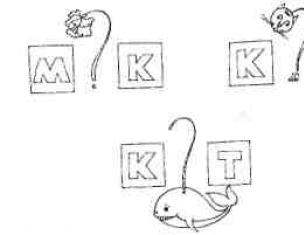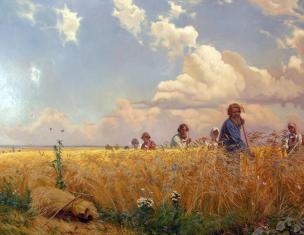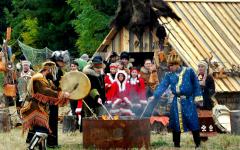Wake up anyone in the middle of the night with the question: “Who discovered America first?”, and without hesitation, they will immediately give you the correct answer, calling the name of Christopher Columbus. This is for everyone known fact , which no one seems to dispute. But was Columbus the first European to set foot on new land? Not at all. There is only one question: “So who?” But they didn’t call Columbus for nothing discoverer.
In contact with
How Columbus became a discoverer
In what century did such significant changes for the world take place? The official date for the discovery of a new continent called the Americas is 1499, 15th century. At that time, the inhabitants of Europe began to have speculation that the earth was round. They began to believe about the possibility of navigation on the Atlantic Ocean and the opening of a western route directly to the shores of Asia.
The story of how Columbus discovered America is very funny. It so happened that he randomly stumbled upon the New World, heading to distant India.
Christopher was an avid sailor, who from a young age managed to visit all those known at that time. Carefully studying a huge number geographical maps, Columbus planned to sail to India across the Atlantic without passing through Africa.
He, like many scientists of that time, naively believed that, having gone directly with Western Europe to the east, it will reach the shores of Asian countries such as China and India. No one could even imagine what was suddenly on his way new lands will appear.
It was the day when Columbus reached the shores of the new continent and is considered the beginning of American history.
Continents discovered by Columbus
Christopher is considered the one who discovered North America. But in parallel with it, after news of the New World spread throughout all countries, the struggle for the development of the northern territories the British entered.
In total the navigator accomplished four expeditions. The continents that Columbus discovered: the island of Haiti or, as the traveler himself called it, Spain Minor, Puerto Rico, Jamaica, Antigua and many other territories of North America. From 1498 to 1504, during his last expeditions, the navigator had already mastered lands of South America, where it reached the shores of not only Venezuela, but also Brazil. A little later the expedition reached Central America, where they were mastered coastlines Nicaragua and Honduras, all the way to Panama.
Who else explored America?
Formally, many sailors opened America to the world in different ways. History goes back many names related to the development of the lands of the New World. Columbus's case continued:
- Alexander Mackenzie;
- William Baffin;
- Henry Hudson;
- John Davis.
Thanks to these navigators, the entire continent was explored and developed, including Pacific coast.
Also, another discoverer of America is considered no less famous person - Amerigo Vespucci. The Portuguese navigator went on expeditions and explored the coast of Brazil.
It was he who first suggested that Christopher Columbus sailed far not to China and India, but to previously unknown. His speculations were confirmed by Ferdinand Magellan, after completing his first trip around the world.
It is believed that the continent was named precisely in honor of Vespucci, contrary to all the logic of what is happening. And today the New World is known to everyone under the name America, and not by any other name. So who really discovered America?
Pre-Columbian expeditions to America
In the legends and beliefs of the Scandinavian peoples you can often come across mention of distant lands called Vinland located near Greenland. Historians believe that it was the Vikings who discovered America and became the first Europeans to set foot on the lands of the New World, and in their legends Vinland is nothing more than Newfoundland.
Everyone knows how Columbus discovered America, but in fact Christopher was far away not the first navigator who visited this continent. Leif Erikson, who named one of the parts of the new continent Vinland, cannot be called a discoverer.
Who should be considered first? Historians dare to believe that he was a merchant from distant Scandinavia - Bjarni Herjulfsson, which is mentioned in the Greenlanders' Saga. That's why literary work, in 985 g. he set out towards Greenland to meet his father, but lost his way due to a strong storm.
Before the discovery of America, the merchant had to sail at random, since he had never seen the lands of Greenland before and did not know the specific course. Soon he reached the level shores of an unknown island, covered with forests. This description did not suit Greenland at all, which greatly surprised him. Bjarni decided not to go ashore, and turn back.
Soon he sailed to Greenland, where he told this story to Leif Erikson, the son of the discoverer of Greenland. Exactly he became the first of the Vikings who tried their luck to join to the lands of America before Columbus, which he nicknamed Vinland.
Forced search for new lands
Important! Greenland is not the most pleasant country to live in. It is poor in resources and has a harsh climate. The possibility of resettlement at that time seemed like a pipe dream for the Vikings.
Stories about fertile lands covered with dense forests only spurred them on to move. Erickson gathered himself a small team and set off on a journey in search of new territories. Leif became the one who discovered North America.
The first unexplored places they stumbled upon were rocky and mountainous. In their description today, historians see nothing more than Baffin Island. Subsequent coasts turned out to be low-lying, with green forests and long sandy beaches. This reminded historians very much of the description coast of the Labrador Peninsula in Canada.
On the new lands they mined wood, which was so difficult to find in Greenland. Subsequently, the Vikings founded the first two settlements in the New World, and all these territories were called Vinland.
The scientist nicknamed "the second Columbus"
 The famous German geographer, naturalist and traveler - all this is one great person whose name is Alexander Humboldt.
The famous German geographer, naturalist and traveler - all this is one great person whose name is Alexander Humboldt.
This greatest scientist discovered America before others on the scientific side, having spent many years on research, and he was not alone. Humbaldt did not think long about what kind of partner he needed and immediately made his choice in favor of Bonpland.
Humboldt and the French botanist in 1799. went on a scientific expedition to South America and Mexico, which lasted five whole years. This journey brought scientists worldwide fame, and Humboldt himself began to be called the “second Columbus.”
It is believed that in 1796 The scientist set himself the following tasks:
- explore little-studied areas of the globe;
- systematize all received information;
- taking into account the research results of other scientists, comprehensively describe the structure of the Universe.
All tasks, of course, were successfully completed. After the discovery of America as a continent, no one dared until Humbaldt conduct similar studies. Therefore, he decides to go to the most little-studied area - the West Indies, which allows him to achieve colossal results. Humboldt created the first geographical maps discovered America almost simultaneously, but in world history the name of Christopher Columbus will always be first on the list of those who explored the territories of the New World.
In what sequence the continents were discovered by Europeans, you will learn from this article.
In what centuries were the continents discovered?
The discovery of continents was consistent and natural. It is known that there are 6 continents on our planet. The largest of them is Eurasia. The second continent in terms of territorial size is Africa. Its shores are washed by two oceans - the Atlantic and Indian. Two subsequent continents, South and North America connected by the small Isthmus of Panama. The fifth continent is Antarctica, which is covered with a thick shell of ice. This is the only continent of all 6 continents where there are no permanent residents. It has created a large number polar stations, scientists regularly visit them and conduct observations. Australia is the latest and greatest small continent on the planet.
How did the continents get their names?
The continents were named by the Europeans who discovered them. There is no exact date for the discovery of Eurasia and Africa. What is known is that even the ancient Greeks knew and distinguished Eurasia into Asia and Europe. Europe is the part of the territory that was located to the west of Greece, and Asia was on the eastern side. Africa became known to the world after the Romans conquered the southern part of the Mediterranean coast.
At the end of the 15th century - the beginning of the 16th century, namely in 1492 he made a long sea expedition and discovered America.
In the 17th century Dutch navigators discovered a fifth continent, which they called Terra Australis Incognita. It stands for Unknown Southern Land. The fifth continent was Australia.
Antarctica (Greek ἀνταρκτικός - the opposite of the Arctic) is the sixth, most recently discovered, continent in the very south of the Earth, the center of Antarctica approximately coincides with the southern geographic pole. Antarctica, together with the Antarctic region extending around it, is a world natural reserve.
The other day marks the 190th anniversary of the discovery of Antarctica, so we have prepared this publication so that each of us can discover a little interesting and educational information about Antarctica and Antarctica.
Satellite view of Antarctica
Treaty, Protocol and claims
According to the Antarctic Treaty of December 1, 1959, both Antarctica as a whole and the Antarctic continent itself cannot belong to any state, are used only for peaceful purposes, researchers have access to any point in Antarctica and the right of access to information obtained by researchers of other countries; The Madrid Protocol 1991 prohibits any production activities and mining in Antarctica. Compliance with the provisions of the treaty and protocol is monitored by a special Secretariat of the Antarctic Treaty, which includes representatives of 45 states. 
International Antarctic Post
True, the existence of a treaty does not mean that even the states that joined it renounced their territorial claims to the continent and the adjacent space. Against, territorial claims some countries are huge. For example, Norway claims territory ten times larger than its own. Great Britain “claimed” vast territories as its own. Australia considers almost half of Antarctica its own, into which, however, the “French” Adélie Land is wedged. New Zealand also made territorial claims. Great Britain, Chile and Argentina claim almost the same territory, including the Antarctic Peninsula and the South Shetland Islands.

Territorial claims to Antarctica
The United States and Russia took a special position, declaring that, in principle, they could put forward their territorial claims in Antarctica, but have not yet done so. Moreover, both states do not recognize the claims of other countries, as well as the claims of each other. Moreover, several obscure virtual states have also “registered” on the territory of Antarctica.

Russian research station "Vostok", south geomagnetic pole
Discovery of Antarctica
The coast of Antarctica without eternal ice The first to be seen were Russian navigators, members of the expedition of F.F. Bellingshausen January 29, 1821. Bellingshausen’s travel diary for January 17 says: “At 11 o’clock in the morning we saw the coast; its cape, stretching to the north, ended in a high mountain, which is separated by an isthmus from other mountains... I call this finding a coast because the distance of the other end to to the south has disappeared beyond the limits of our vision... A sudden change in color on the surface of the sea gives the idea that the shore is extensive, or at least does not consist only of the part that was before our eyes." Bellingshausen gave this coast the name of the Russian Emperor Alexander I. The land of Alexander I turned out to be part of the continent of Antarctica.Land of Alexander I. Drawing from life, made by artist Pavel Nikolaevich Mikhailov, a member of the Bellingshausen expedition, in January 1821.
Antarctica is the highest continent on Earth, the average height of the continent's surface above sea level is more than 2000 m, and in the center it reaches 4000 meters. Most of this height is made up of the continent's permanent ice sheet, and only 0.3% of its area is ice-free.

Ice of Antarctica
The Antarctic ice sheet is the largest on our planet and is approximately 10 times larger in area than the Greenland ice sheet. It contains ~30,000,000 km³ of ice, and the thickness of the ice layer reaches almost 5 kilometers in some areas of Antarctica. Another feature of Antarctica is its large area of ice shelves (~10% of the area above sea level); these glaciers are the source of icebergs of record sizes. For example, in 2000, the largest ice shelf in the world broke off from the Ross Ice Shelf. this moment iceberg, which was given the name B-15, with an area of over 10 thousand km². In winter (we have summer in the Northern Hemisphere), the area sea ice around Antarctica increases to 18 million km². 
Antarctica map
Weather in Antarctica
Antarctica has an extremely harsh cold climate. There is no colder place on Earth. In East Antarctica, at the Russian, then still Soviet Antarctic station Vostok - on July 21, 1983, the most low temperature air on Earth for the entire history of meteorological measurements: 89.2 degrees below zero.In addition to the pole of cold, Antarctica has points of the lowest relative humidity, the strongest and longest wind, the most intense solar radiation.
Another feature of Antarctica is the winds that blow only near the surface. Because of large quantity of the icy dust they carry, visibility is practically zero. The wind force is proportional to the steepness of the slopes of the continent and in coastal areas with a high slope towards the sea reaches hurricane levels. The winds reach their maximum strength in the Antarctic winter. In addition, they blow almost continuously around the clock, and from November to March - throughout the night. Only in summer, during the daytime, due to the slight heating of the surface layer of air by the sun, do the winds stop.

Antarctic winds from an airplane
Antarctic ice contains up to 90% of all fresh water Earth. And despite the almost constant strong sub-zero temperatures, there are even lakes in Antarctica, and in summer time and rivers. The rivers are fed by glaciers. Thanks to intense solar radiation due to the exceptional transparency of the air, glaciers melt even at subzero temperatures. With the onset of severe frosts, the melting stops, and the deep channels of melted streams with steep banks are covered with snow. Sometimes the beds of streams are blocked even before the current freezes, and then the streams flow in ice tunnels, completely invisible from the surface, gradually forming lakes. They are almost always covered with a thick layer of ice. However, in summer period If the lake is not deep from the surface, along the banks and at the mouths of streams their banks open up.

Blue ice covering Lake Fryxell in the Transantarctic Mountains
In the 1990s, Russian scientists discovered the subglacial non-freezing Lake Vostok, the largest of the Antarctic lakes, with a length of 250 km and a width of 50 km, and in 2006 the second and third largest subglacial lakes were discovered, with an area of 2000 km² and 1600 km², respectively. , located at a depth of about 3 km from the surface of the continent.
In Antarctica there are peculiar glacial “swamps”. They form in the summer in lowlands. Melt water flowing into them forms a snow-water porridge, viscous, like ordinary swamps. The depth of such “swamps” is most often no more than one and a half meters. But on top they are covered with a thin ice crust, and like real swamps, they are sometimes impassable even for tracked vehicles: a tractor or all-terrain vehicle that gets stuck in such a place, stuck in a snow-water mess, will not get out without outside help.

Dormant Volcano Erebus - "Guardian of the Gates" South Pole"
Why is it necessary to study and develop Antarctica?
. Antarctica is the last resource reserve of humanity; it is the last place where humanity will be able to extract mineral raw materials after it has been depleted on the five inhabited continents. Geologists have found that the depths of Antarctica contain a significant amount of minerals - iron ores, coal, traces of ores of copper, nickel, lead, zinc, molybdenum were found, rock crystal, mica, and graphite were found.. Observations of climatic and meteorological processes on the continent, which, like the Gulf Stream in the Northern Hemisphere, is a climate-forming factor for the entire Earth.
. Antarctica contains up to 90% of the world's fresh water reserves.
. In Antarctica, the effects of space and the processes occurring in earth's crust, which is already bringing serious scientific results today, informing us about what the Earth was like a hundred, thousand, hundreds of thousands of years ago. In the Antarctic ice sheet, data on the climate and composition of the atmosphere over the past hundred thousand years was “recorded on ice.” By chemical composition different layers of ice determine the level solar activity over the past several centuries.
. Antarctic bases, especially Russian ones, located around the continent's perimeter, provide ideal opportunities for monitoring seismological activity across the planet.
. Antarctic bases are testing technologies that are planned to be used for the exploration, development and colonization of the Moon and Mars
January 16 (28 BC) 1820 The sailing ships Vostok and Mirny approached the coast of Antarctica “covered with lumpy ice,” as Bellingshausen indicated in his diary. So it was opened last continent on Earth - the era of the great geographical discoveries ended successfully.
O. Tikhomirov
Even in ancient times, people believed that in the southern polar region there was a large, unexplored land. There were legends about her. They talked about all sorts of things, but most often about gold and diamonds, with which she was so rich. Brave sailors set off on their journey to the South Pole. In search of the mysterious land, they discovered many islands, but no one was able to see the mysterious mainland.
The famous English navigator James Cook made a special trip in 1775 to “find a continent in the Arctic Ocean,” but he too retreated before the cold, squally winds and ice.
Does it really exist, this unknown land? On July 4, 1819, two ships left the port of Kronstadt Russian ships. On one of them - on the sloop "Vostok" - the commander was captain Thaddeus Faddeevich Bellingshausen. The second sloop, Mirny, was commanded by Lieutenant Mikhail Petrovich Lazarev. Both officers, experienced and fearless sailors, by that time had each already managed to do trip around the world. Now they were given the task: to get as close as possible to the South Pole, “check everything that is incorrect” that was indicated on the maps, and “discover unknown lands.” Bellingshausen was appointed head of the expedition.
Four months later, both sloops entered the Brazilian port of Rio de Janeiro. The teams got a short break. After the holds were replenished with water and food, the ships weighed anchor and continued on their way. Bad weather became more and more frequent. It was getting colder. There were squalls of rain. A thick fog enveloped everything around.
In order not to get lost, the ships had to not move far from one another. At night, by order of Bellingshausen, lanterns were lit on the masts. And if it happened that the sloops lost sight of each other, they were ordered to fire the cannons.
Every day "Vostok" and "Mirny" came closer and closer to the mysterious land. When the wind died down and the sky cleared, the sailors admired the play of the sun in the blue-green waves of the ocean, watched with interest the whales, sharks and dolphins that appeared nearby and accompanied the ships for a long time. On the ice floes, seals began to be seen, and then penguins - large birds that walked funny, stretched out in a column. It seemed that the penguins had thrown open black cloaks over their white clothes. Russian people have never seen such amazing birds before. The first iceberg, a floating mountain of ice, also amazed travelers.
Having discovered several small islands and marked them on maps, the expedition headed for Sandwich Land, which Cook was the first to discover. The English navigator did not have the opportunity to explore it and believed that a large island lay in front of him. The shores of Sandwich Land were densely covered with snow. Ice floes were piled up near them. Having called these places the “terrible south,” the Englishman turned back. In the logbook, Cook wrote: “I take the liberty of saying that the lands that may be located in the south will never be explored.”
Bellingshausen and Lazarev managed to go 37 miles further than Cook and more accurately study the Sandwich Land. They found out that this is not one island, but whole line islands. The Englishman was mistaken: what he called capes turned out to be islands.
Making their way between the heavy ice, "Vostok" and "Mirny" tried to find a passage to the south at every opportunity. Soon there were so many icebergs next to the sloops that they had to maneuver every now and then so as not to be “shattered by these masses, which sometimes extended up to 100 meters above the surface of the sea.” Midshipman Novosilsky made this entry in his diary.
On January 15, 1820, a Russian expedition crossed the Antarctic Circle for the first time. The next day, from Mirny and Vostok they saw a high strip of ice on the horizon. The sailors initially mistook them for clouds. But when the fog cleared, it became clear that the ships faced a coast consisting of lumpy piles of ice.
What is this? Could the mysterious Southern continent have opened up before the expedition? Bellingshausen did not allow himself to draw such a conclusion. The researchers put everything they saw on the map, but again the approaching fog and snow prevented them from determining what was behind the lumpy ice. Later, many years later, this very day - January 16 - began to be considered the day of the discovery of Antarctica. This was also confirmed by photographs from the air: “Vostok” and “Mirny” were indeed located 20 kilometers from the sixth continent.
The Russian ships were unable to advance even deeper to the south: solid ice blocked the path. The fogs did not stop, the wet snow fell continuously. And then there was a new misfortune: on the sloop “Mirny” an ice floe broke through the hull, and a leak formed in the hold. Captain Bellingshausen decided to head to the shores of Australia and there, in Port Jackson (now Sydney), to repair the Mirny.
The repair turned out to be difficult. Because of it, the sloops stood in the Australian port for almost a month. But then the Russian ships raised their sails and, having fired their cannons, left for New Zealand to explore the tropical latitudes Pacific Ocean, while winter lasted in the Southern Hemisphere.
Now the sailors were pursued not by the icy wind and blizzard, but by the scorching rays of the sun and the sweltering heat. The expedition discovered a chain of coral islands, which were named after heroes Patriotic War 1812. During this voyage, the Vostok almost hit a dangerous reef - it was immediately given the name stranded Beware.
When the ships dropped anchor near the inhabited islands, many boats with natives rushed towards the sloops. The sailors were heaped with pineapples, oranges, coconuts and bananas. In exchange, the islanders received items useful to them: saws, nails, needles, dishes, fabrics, fishing gear, in a word, everything that was necessary on the farm.
On July 21, "Vostok" and "Mirny" stood off the coast of the island of Tahiti. The Russian sailors felt as if they were in a fairy-tale world - this piece of land was so beautiful. Dark high mountains stuck their peaks into the bright blue sky. Lush coastal greenery glowed emerald against the background of azure waves and golden sand. The King of the Tahitians, Pomare, wished to be on board the Vostok. Bellingshausen kindly received him, treated him to lunch and even ordered him to fire several shots in honor of the king. Pomare was very pleased. True, with every shot he hid behind Bellingshausen’s back.
Returning to Port Jackson, the sloops began to prepare for a new difficult voyage to the land of eternal cold. On October 31, they weighed anchor, heading south. Three weeks later the ships entered the ice zone. Now Russian ships were going around the southern polar circle from the opposite side.
"I see land!" - such a signal came from the Mirny to the flagship on January 10, 1821. All members of the expedition flocked on board in excitement. And at this time the sun, as if wanting to congratulate the sailors, looked out for a short moment from the torn clouds. Ahead, about forty miles away, a rocky island was visible. The next day they came closer to him. The mountainous island rose 1300 meters above the ocean. Bellingshausen, having assembled the team, solemnly announced: “The open island will bear the name of the creator of the Russian fleet, Peter the Great.” Three times "Hurray!" rolled over the harsh waves.
A week later, the expedition discovered a coast with a high mountain. Bellingshausen tried to bring the sloops to him, but an impassable ice field appeared in front of them. The land was called the Coast of Alexander I. The waters themselves washing this land and the island of Peter I were later called the Bellingshausen Sea.
The journey of “Vostok” and “Mirny” continued for more than two years. It ended in his native Kronstadt on July 24, 1821. Russian navigators traveled eighty-four thousand miles on sloops - this is more than a double journey around the globe along the equator.
The first to reach the South Pole was the Norwegian Raoul Amudsen at the end of 1911. He and his expedition of several people reached the Pole on skis and dog sleds. A month later, another expedition approached the pole. It was led by the Englishman Robert Scott. This, undoubtedly, was also a very courageous and strong-willed man. But when he saw the Norwegian flag left by Amudsen, Scott experienced a terrible shock: he was only the second! We've been here before! Power on Return trip The Englishman no longer has any left. “God Almighty, what a terrible place!” he wrote in the diary with a weakening hand.
But who owns the sixth continent, where valuable minerals and minerals have been discovered deep under the ice? Many countries claimed different parts of the continent. Mining would, of course, lead to the destruction of this cleanest continent on Earth. And the human mind won. Antarctica has become a world nature reserve - the "Land of Science". Now only scientists and researchers from 67 countries work here at 40 scientific stations. Their work will help to better know and understand our planet. In honor of the expedition of Bellingshausen and Lazarev, Russian stations in Antarctica are named “Vostok” and “Mirny”.








